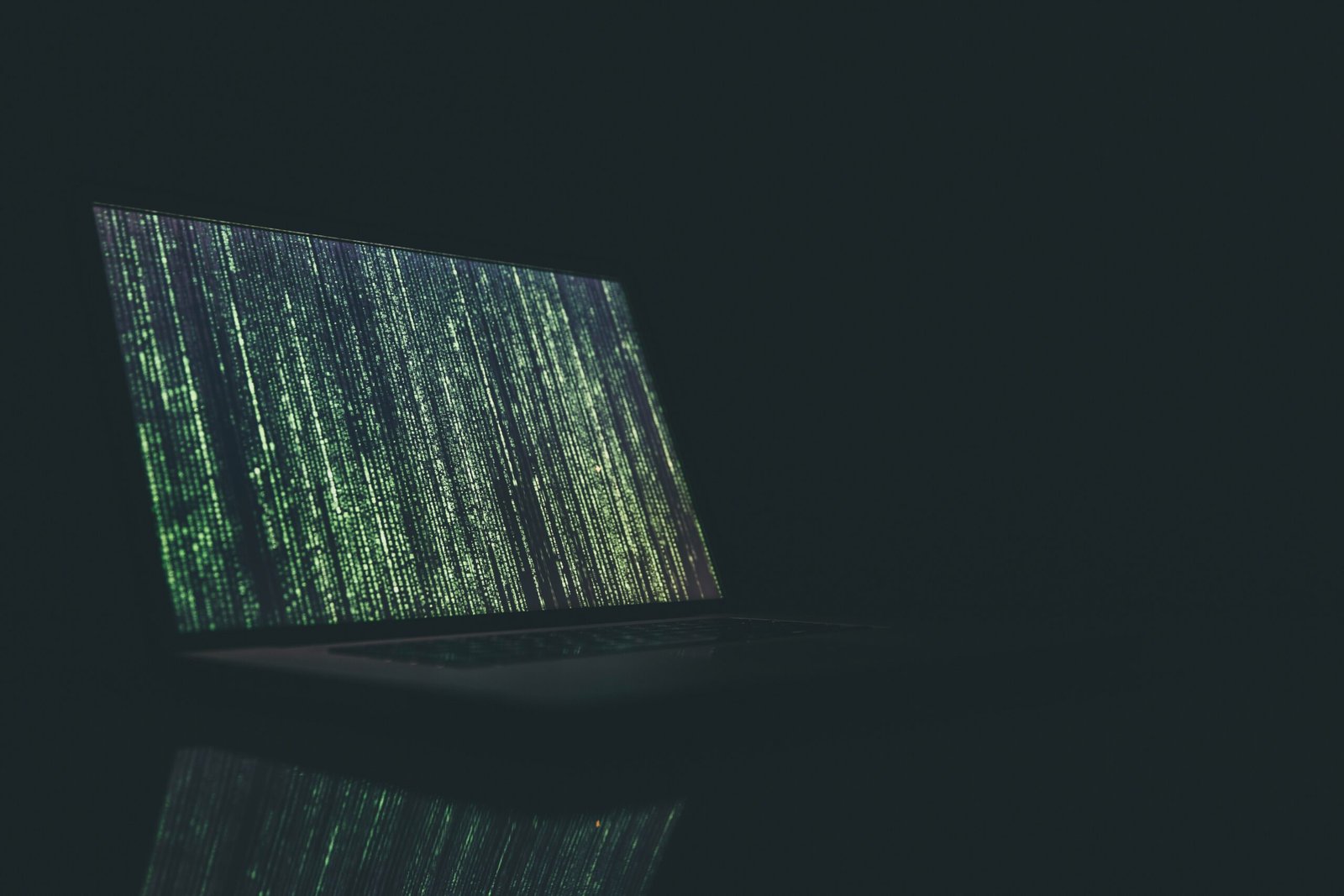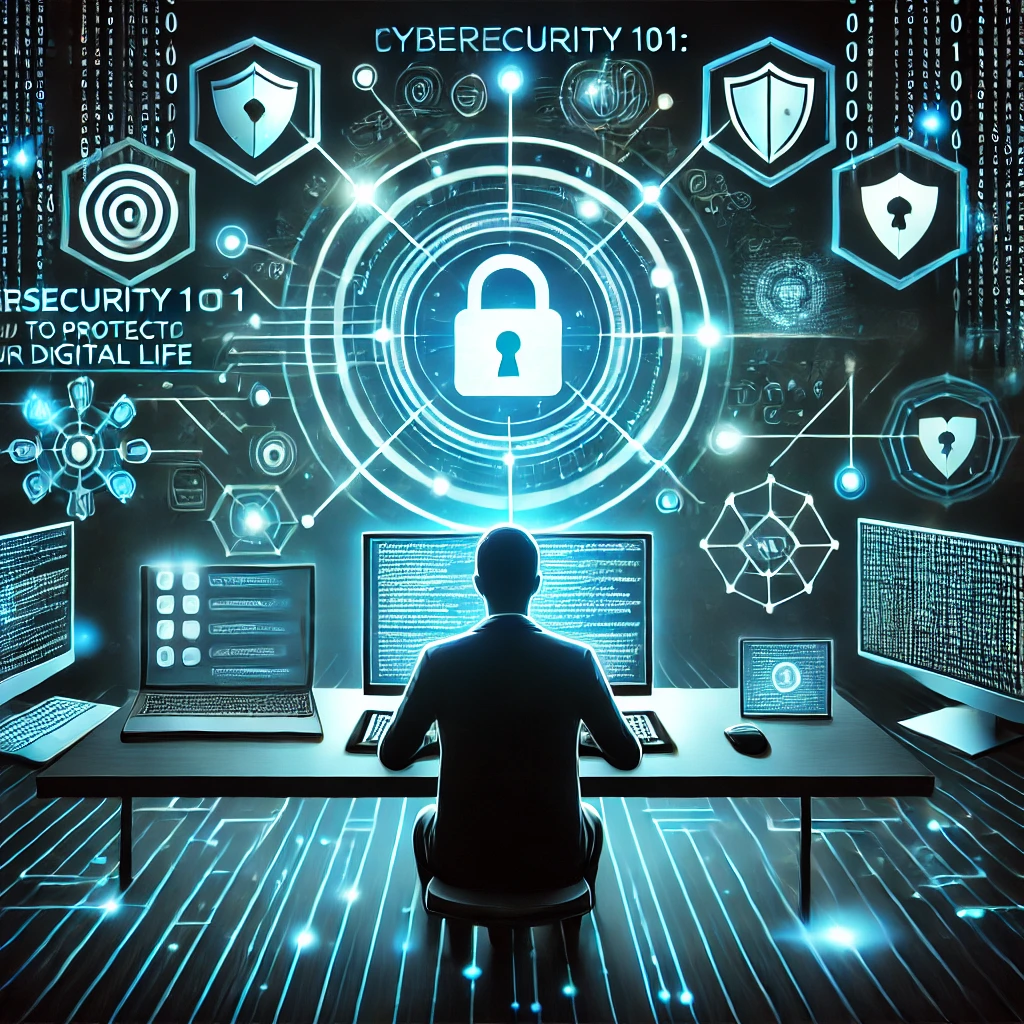Table of Contents

Introduction to Cybersecurity
In today’s interconnected world, cybersecurity has become a crucial component of our digital lives. The term cybersecurity encompasses the practices, technologies, and processes designed to protect internet-connected systems, including hardware, software, and data, from cyber threats and unauthorized access. As our reliance on digital platforms grows, so does the array of potential cyber risks that can jeopardize our personal information, business operations, and even national security.
Cybersecurity aims to safeguard the integrity, confidentiality, and availability of information stored and transmitted across the digital landscape. This protection is essential not only for maintaining personal privacy but also for the smooth functioning of businesses and governmental entities. The scope of cybersecurity is broad, covering various disciplines such as network security, information security, and operational security, each addressing unique aspects of the digital ecosystem.
The importance of cybersecurity cannot be overstated. Individuals need to be aware of the potential risks they face while navigating online services and social media platforms. For organizations, maintaining robust cybersecurity practices is crucial to protecting sensitive customer data, intellectual property, and financial information. Moreover, governments require stringent cybersecurity measures to defend critical national infrastructure against cyber espionage and sabotage.
Understanding cybersecurity and implementing best practices are fundamental steps in mitigating cyber threats. This knowledge empowers individuals to safeguard their personal devices and data, while businesses and governments can develop comprehensive strategies to protect their digital assets. As the digital landscape continues to evolve, staying informed about cybersecurity trends and emerging threats is imperative for all users to maintain a secure digital environment.
Common Cyber Threats
In today’s digital age, cybersecurity is paramount as the internet becomes increasingly integral to daily life. Understanding common cyber threats is essential in safeguarding personal and organizational data alike. This section delves into some of the pervasive threats that users encounter, including malware, phishing, social engineering, man-in-the-middle attacks, and Distributed Denial of Service (DDoS) attacks.
Malware: Malware, short for malicious software, encompasses various harmful programs such as viruses, ransomware, spyware, and Trojans. These programs infiltrate and damage systems, steal sensitive information, or disrupt operations. For example, ransomware encrypts a user’s data and demands payment for the decryption key, often leaving victims in a precarious situation. Organizations can face severe operational downtime and financial losses due to such attacks.
Phishing Attacks: Phishing attacks are attempts to deceive individuals into providing sensitive information, such as usernames, passwords, and credit card details, by masquerading as legitimate entities. This is commonly executed through email or fraudulent websites. Cybercriminals craft convincing messages to trick recipients into clicking malicious links or downloading harmful attachments, leading to data breaches and identity theft.
Social Engineering: Social engineering exploits human psychology to gain unauthorized access to private information. Attackers manipulate individuals into divulging confidential data by posing as trusted persons or entities. Tactics include pretexting (creating a fabricated scenario to obtain information) and baiting (offering something enticing to trick victims). The human factor often makes social engineering attacks particularly successful and damaging.
Man-in-the-Middle Attacks: In Man-in-the-Middle (MitM) attacks, an attacker intercepts and possibly alters communication between two parties who believe they are directly communicating with each other. This type of attack can compromise the integrity and confidentiality of exchanged information, such as during financial transactions, by inserting itself into the communication flow.
Distributed Denial of Service (DDoS) Attacks: DDoS attacks involve overwhelming a target system, such as a website or online service, with excessive traffic to render it unavailable to users. By leveraging multiple compromised devices, attackers disrupt the normal functioning of the target service, often resulting in loss of revenue, damage to reputation, and customer dissatisfaction. Organizations must implement robust mitigation strategies to defend against such multifaceted assaults.
By staying informed about these common cyber threats, individuals and organizations can better arm themselves with the knowledge and tools necessary to protect their digital assets from potential harm.
Best Practices for Personal Cybersecurity
In today’s digitally interconnected world, safeguarding your personal cybersecurity is crucial. One of the fundamental steps individuals can take is to create strong, unique passwords for each of their online accounts. A strong password typically includes a mix of letters, numbers, and special characters, making it difficult for malicious actors to decipher. To manage numerous complex passwords, consider using a password manager. These tools generate, retrieve, and store strong passwords, ensuring your credentials remain secure.
Another essential practice is enabling multi-factor authentication (MFA) wherever possible. MFA adds an extra layer of security by requiring additional verification steps beyond the password, such as a fingerprint scan or a one-time code sent to your mobile device. This additional step significantly reduces the likelihood of unauthorized access, even if your password is compromised.
Recognizing phishing attempts is also critical. Phishing scams often arrive as deceitful emails or messages, tricking recipients into disclosing sensitive information like login credentials or financial details. Be cautious of unsolicited emails, especially those urging immediate action or containing suspicious attachments. Always verify the authenticity of the source before engaging with any such communication.
Regularly updating software and devices is another vital step in fortifying personal cybersecurity. Software updates often include patches for security vulnerabilities that cybercriminals could exploit. Ensure your operating system, applications, and security software are up-to-date to protect against known threats.
Finally, securing personal devices amplifies cybersecurity efforts. Use encryption for sensitive files, activate remote wipe and tracking features on mobile devices, and avoid connecting to unsecured public Wi-Fi networks. When using public Wi-Fi, consider employing a virtual private network (VPN) to encrypt your internet traffic, safeguarding your data from potential eavesdroppers.
By following these best practices, individuals can significantly enhance their cybersecurity posture, protecting their digital lives against the ever-evolving landscape of online threats.
Securing Your Home Network
Securing your home Wi-Fi network is essential to prevent unauthorized access and protect your digital life from potential cyber threats. The initial step involves changing the default settings of your router, which often come with generic usernames and passwords. These defaults are well-known and easily exploitable by hackers. Ensure that your new credentials are complex, comprising a mix of letters, numbers, and special characters.
Enabling network encryption is another critical measure. Use WPA3 encryption if supported, as it offers the highest level of security currently available. If not, WPA2 is an acceptable alternative. Encryption ensures that data transmitted over your Wi-Fi network is unreadable to unauthorized users.
Regularly updating your router’s firmware is vital. Manufacturers release firmware updates to fix known vulnerabilities and enhance security features. Regular updates ensure your network is protected against the latest threats. Check your router’s settings or manufacturer’s website for firmware update instructions.
Additionally, consider setting up a guest network for visitors. A guest network is isolated from your primary network, thus mitigating the risk of exposure to devices that you have less control over. This setup ensures that even if a guest device is compromised, your main network remains secure.
A vital yet often overlooked practice is routinely reviewing the devices connected to your network. Most modern routers offer a dashboard that lists all connected devices. Regularly monitor this list to detect and remove any unfamiliar devices that could signal unauthorized access. Along with this, regularly update the security settings of your devices, such as firewalls and antivirus software, to thwart potential threats.
By following these steps, you can significantly enhance the security of your home network, thereby safeguarding your digital life against unauthorized access and cyber threats.
Protecting Your Sensitive Information
In the digital age, the safeguarding of sensitive information is paramount. One effective measure is the use of encryption, which converts data into a code to prevent unauthorized access. Encrypting both data storage and transmission ensures that your information remains secure, whether it is stored on your device or sent through networks.
Another critical tool in protecting your data is the use of Virtual Private Networks (VPNs). VPNs create a secure, encrypted connection over less secure networks, such as public Wi-Fi, making it significantly harder for cybercriminals to intercept your data. Always activate a VPN when accessing the internet from public spaces to enhance your online privacy.
It’s also essential to exercise caution concerning the information you share online, especially on social media platforms. Personal details like your full name, birthdate, and address can be exploited by malicious entities for identity theft or phishing scams. Be mindful of your privacy settings and limit the exposure of sensitive information.
Spotting and handling identity theft swiftly is crucial. Warning signs include unfamiliar charges on your accounts, receiving bills for services you didn’t sign up for, and notices about data breaches involving your personal information. If you suspect identity theft, immediately notify your financial institutions, place a fraud alert on your credit reports, and report the theft to local law enforcement and the Federal Trade Commission (FTC).
Adopting these measures—encryption, using VPNs, cautious sharing online, and vigilance against identity theft—can significantly bolster your defenses against cyber threats. By implementing these strategies, you are taking proactive steps to protect your sensitive information in an increasingly interconnected world.
Cybersecurity Tools and Software
In the ever-evolving landscape of cyber threats, employing a robust set of cybersecurity tools and software is essential to safeguard your digital life. These tools act as protective layers, detecting, preventing, and responding to various cyber-attacks. Foremost among these are antivirus programs, firewalls, anti-malware tools, encryption software, and secure backup solutions, each serving a specific role in a comprehensive cybersecurity strategy.
Antivirus programs are foundational elements in any cybersecurity framework. They scan, detect, and remove malicious software, including viruses, worms, and Trojans. By constantly updating their virus definitions, antivirus programs ensure that they can recognize and neutralize the latest threats. Popular antivirus programs, such as Norton and McAfee, offer real-time protection and perform regular system scans to ward off potential threats.
Complementing antivirus programs, firewalls serve as the first line of defense by monitoring and controlling incoming and outgoing network traffic based on predetermined security rules. Firewalls work by creating barriers between trusted internal networks and untrusted external ones. Both hardware and software firewalls are available, with software firewalls, like those integrated into Windows and macOS, providing user-friendly interfaces to manage network security on personal devices.
Beyond viruses, anti-malware tools are crucial for combating a broader range of cyber threats such as ransomware, spyware, and adware. These tools conduct deep scans and offer more specialized threat removal capabilities. Notable examples include Malwarebytes and Bitdefender Anti-Malware, which provide comprehensive protection by identifying and eliminating malware components that antivirus programs may overlook.
Encryption software is pivotal for protecting sensitive information. By converting data into unreadable code, encryption ensures that only authorized users with the correct decryption key can access the information. Tools like VeraCrypt and BitLocker facilitate the encryption of files, folders, and even entire drives, offering robust protection against unauthorized access and data breaches.
Lastly, secure backup solutions are indispensable in a robust cybersecurity strategy. They ensure that, in the event of a cyber-attack or data loss, you can quickly restore your data. Cloud-based services such as Google Drive and Dropbox provide automated backup options, while physical solutions like external hard drives offer additional layers of security. Regular backups not only secure against ransomware but also safeguard data from hardware failures and accidental deletions.
Each of these tools and software plays a critical role in fortifying your cybersecurity posture, making it vital to incorporate them into your digital defense strategy to ensure maximum protection against an array of cyber threats.
Staying Informed and Educated
The realm of cybersecurity is constantly evolving, with new threats and vulnerabilities emerging on a daily basis. Staying informed and educated about the latest developments in cybersecurity is pivotal for safeguarding one’s digital life. An informed individual is better equipped to recognize and mitigate potential threats before they can cause damage.
There are numerous reputable sources from which you can glean valuable cybersecurity news and updates. Websites like Ars Technica and Krebs on Security offer in-depth articles on the latest cybersecurity trends, breaches, and expert analyses. Furthermore, government-affiliated sites such as the Cybersecurity & Infrastructure Security Agency (CISA) provide timely alerts and valuable resources for individuals and organizations alike.
For those who prefer audio content, cybersecurity podcasts are an excellent way to stay informed. Podcasts such as “Darknet Diaries” delve into real-life stories of cybercrime and cybersecurity, while “Security Now” provides a weekly update on the noteworthy happenings in the cybersecurity world. These podcasts are ideal for keeping up-to-date during commutes or downtime.
Additionally, subscribing to newsletters from well-regarded cybersecurity organizations can ensure you receive regular updates directly to your inbox. Newsletters from SANS Institute, InfoSecurity Magazine, and ThreatPost are highly recommended for their concise and informative content.
Continuous learning is also essential for maintaining robust cybersecurity practices. Numerous online courses provide comprehensive education on cybersecurity principles and practices. Platforms like Coursera, Udemy, and edX host courses ranging from beginner to advanced levels in topics such as network security, threat detection, and ethical hacking. Participating in webinars hosted by industry experts can further enhance one’s knowledge and understanding of current cybersecurity issues and solutions.
Achieving recognized certifications in cybersecurity not only deepens your knowledge but also demonstrates expertise. Certifications such as CompTIA Security+, Certified Information Systems Security Professional (CISSP), and Certified Ethical Hacker (CEH) are well-regarded in the industry and provide a structured learning path.
In conclusion, staying informed and educated is a critical component of personal cybersecurity. By leveraging reliable sources of information, engaging in continuous learning, and acquiring certifications, individuals can better protect their digital lives against ever-advancing cyber threats.
Responding to Cyber Incidents
When a cyber incident occurs, time is of the essence. The first step in responding to such incidents is detecting the breach. This involves monitoring your systems continuously for unusual activities or anomalies that may signify a security compromise. Employing reliable cybersecurity software and maintaining an up-to-date log of network activities can aid significantly in early detection.
Once a breach is detected, it is crucial to report it to the relevant authorities promptly. This could include internal response teams, IT departments, and external bodies such as cybersecurity agencies or law enforcement, depending on the severity of the incident. Accurate reporting provides the necessary information for a swift and efficient response.
Immediate action to contain the damage is equally important. Disconnecting affected systems from the network can help prevent the spread of malicious activities. Additionally, changing passwords, applying security patches, and isolating compromised data are practical steps to mitigate further damage.
Understanding the recovery process is essential. This involves identifying the root cause of the breach, removing any malicious entities from the system, and restoring affected data from secure backups. It is also important to validate the integrity of the entire system before resuming normal operations to avoid potential recurrences.
Documenting incidents meticulously serves dual purposes: it offers insights for post-incident analysis and provides evidence for legal and insurance purposes. Keep detailed records of the incident’s nature, impact, response actions taken, and the recovery process.
Preventing future occurrences hinges on learning from past incidents. Regularly updating security protocols, training staff on cybersecurity best practices, and conducting routine system audits can fortify defenses against similar attacks. Emphasizing the importance of having a well-structured response plan in place cannot be overstated; a proactive approach ensures that when breaches occur, the response is prompt, coordinated, and effective, thus minimizing potential damage.






